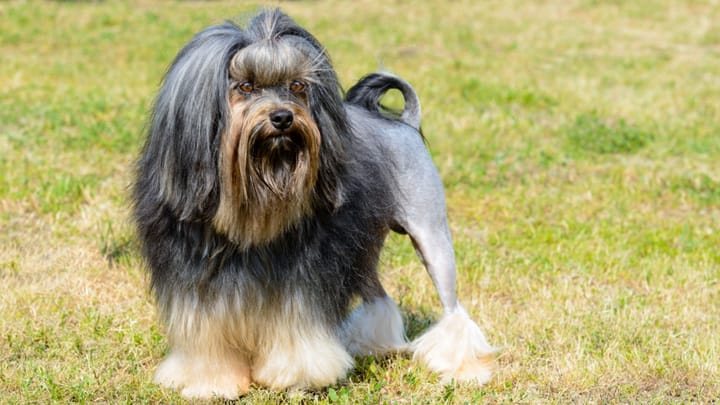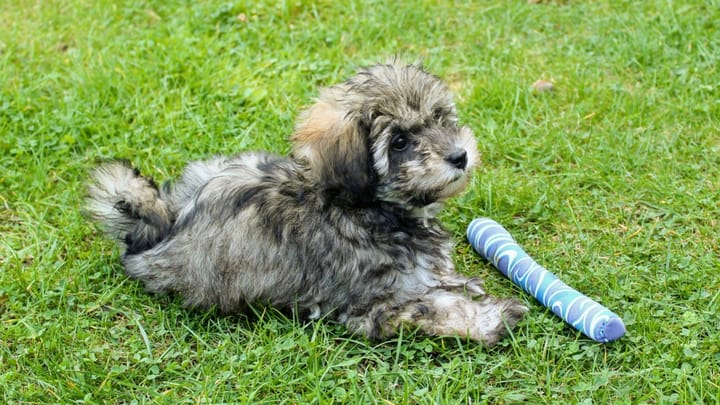Little Lion Dog
Other name: Lowchen


The Little Lion Dog, commonly known as the Lowchen, is a bubbly, loving, smart, alert and intelligent small dog breed. This breed is a fantastic companion pet who thrives on human company and is extremely protective of its family (perhaps a little too much sometimes!).
While the Little Lion Dog may look small, it’s actually a tough, resilient and adaptable dog who’ll be just as happy accompanying you on a walk as curling up in your lap for a cuddle. Getting along well with children and other pets, they make a perfect family dog or companion.
|
Life expectancy |
The Little Lion Dog has a life expectancy of between 12 and 14 years |
|
Temperament |
|
|
Size |
Small
|
|
Adult size |
Female
Between 10 and 13 in
Male
Between 10 and 13 in
|
|
Adult weight |
Female
Between 11 and 15 lb
Male
Between 11 and 15 lb
|
|
Coat colour
The coat is commonly pure white but is also seen in black, chocolate, cream, black and tan, lemon and black, black and silver and many other combinations. |
Black White Brown Blue Red Sand |
|
Type of coat
The Little Lion Dog has a long coat. This breed boasts an amazing, long, wavy, soft and fluffy coat which is full of character and often compared to the man of a lion - hence their name! |
Long Wavy |
|
Eye colour
The Lowchen has dark brown/black eyes. |
Brown
|
|
Purchase price |
The Little Lion Dog costs approximately 750£ |
The Little Lion Dog is relatively uncommon, to the point that in 1960, the race was defined as "the rarest dog in the world". Since then, its popularity has increased slightly, but it still deserves a wider distribution.
More details about the Little Lion Dog
Little Lion Dog: Origins and history
The Lowchen is believed to have originated around 400 years ago in France, Germany or Spain - truthfully, no one knows for sure! Due to their similar looks, many believe the Little Lion Dog is closely related to the Bichon breed. For a long time, it was popular with wealthy people across Europes, often used as a foot warmer for ladies (yes, really!). However, their popularity quickly decreased after WWII - now, the Lowchen is a fairly rare breed.
Physical characteristics of the Little Lion Dog
Small yet sturdy, the Little Lion Dog is one of the bigger toys breeds. Despite their petite size, the body is surprisingly strong, with straight, well-muscled legs and relaxed shoulders.
The head is small but broad with a defined stop, a strong muzzle and a long neck. Ears are dropped and beautifully feathered, while eyes are big, dark, alert and friendly looking.
FCI classification of the Little Lion Dog
-
Group 9 - Companion and Toy Dogs
-
Section 1 : Bichons and related breeds
Little Lion Dog: Characteristics
Little Lion Dog: Behaviour
Training a Little Lion Dog
This smart breed is able to pick up training with ease - you should have no problems whatsoever! As previously mentioned, early socialization is particularly important for the Lowchen, as they tend to be rather timid around new people.
Little Lion Dog: Lifestyle
Breed compatibility Little Lion Dog
Little Lion Dog: Purchase price
This breed isn’t widely available in the UK, but you can expect to pay around £750 for KC Registered dogs.
Looking after a dog of this size typically costs between £50 to £90 a month, including food, medical/insurance, and incidental expenses.
Little Lion Dog: Shedding
Average
Good news for those with allergies - the Lowchen barely sheds!
Little Lion Dog: Grooming
The Lowchen is pretty low-maintenance in terms of grooming. You’ll need to give them a good brush over twice a week. Bathe them only when necessary - too many baths will dry out the skin. You may also want to head to a professional groomer to get the Lowchen’s wonderful hair trimmed.
As with all dogs, nails should be trimmed and ears should be checked and cleaned as often as necessary, and teeth should be cleaned multiple times a week.
Little Lion Dog: Health
This breed normally lives for around 13 years.
Despite their small size, the Little Lion Dog is surprisingly strong, robust and fearless.
This dog adapts well to different climates and can withstand the heat.
Despite the lack of undercoat, the Lowchen is pretty resistant to bad weather. That being said, he mustn’t live outside.
It’s important to control portion sizes and avoid going overboard with treats.
- Eye problems such as cataracts and progressive retinal atrophy
- Hip dysplasia
- Patellar luxation
Do you want a Little Lion Dog dog ?
1 comment
-
1 comment out of 1
Are you sure you want to delete the comment?




